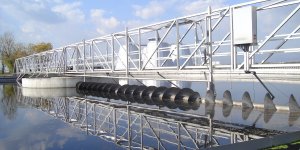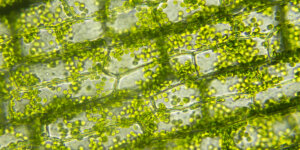
PHOTO/PEXELS,DARIA OBYMAHA.
If you’ve cooked anything in the last decade, you’ve likely used a Teflon coated pan. Teflon is used widely commercially in nonstick cookware, food packaging, fabrics, electronics and more because of its unique ability to repel substances. It is also made of PFTE, a type of PFAS (Per- and polyfluoroalkyl substances), which are extremely chemically stable and difficult to break down.
Toxic to humans and wildlife, PFAS are considered “forever contaminants.” Their ability to persist in the environment makes them a pressing concern—one that the NSF is prioritizing in a new grant program and that researchers at the University of Southern California Viterbi School of Engineering are hoping to address with the help of microorganisms.
The new grant is one of nine recently funded by the NSF in the kickoff of its “Erase PFAS” program. Led by Associate Professor of Civil and Environmental Engineering Adam Smith, in collaboration with the University of Buffalo, the project aims to develop anaerobic membrane bioreactors (AnMBRs) that rely on both bacteria and membranes to remove and destroy PFAS from water. The first step is to identify microbes that demonstrate behavior consistent with decreasing PFAS concentration, and later develop microbial cultures that transform PFAS into less harmful byproducts.
“PFAS are hard to break down because they feature carbon fluorine bonds, which are very strong and difficult to break,” Smith said. “Breaking the bonds, whether via a physical or chemical process, takes a huge investment of energy. We’re trying to find a more efficient route, and that tends to be microorganisms.”
The Role of Microorganisms
Smith said that phase one of this project will be identifying microorganisms that can consume PFAS efficiently. “There was a long-held belief that contaminants, e.g. Trichloroethylene, couldn’t be biologically reduced,” Smith said. “Then we found specialized bacteria that do just that. Chlorine (which is in TCE) is a halogen just like fluorine, so removing chlorine from a carbon and removing fluorine from a carbon is similar. It seems very likely that you could achieve the same effect biologically with PFAS as with TCE.”
Added Smith, “When you look at the amount of energy that can be gained from a microorganism defluorinating these compounds, it is energy positive. They can recover energy and grow off of it. When that’s the case, they should be out there, doing it.”
How to Identify the Microorganism
Smith’s research group, in collaboration with the University of Buffalo, will first be correlating different microbial populations that are increasing activity with decreasing concentrations of PFAS. That’s the first indicator. Then they will do metagenomic sequencing to see if they have genes that correspond with such behavior (like defluorination genes) to directly link the organisms to this type of functional gene.
Smith says that given microbial diversity, it’s likely that these microbes can be identified and utilized to help reduce PFAS in the environment. The goal of this research is to help better understand how bacteria degrades PFASs and how degradation affects their toxicity. Potentially this could help develop tools to facilitate low cost PFAS treatment.
“Programs that help spread awareness or regulate products helped take items like Teflon pans out of people’s kitchens, but this only moved them to landfills, where the PFAS could leach into the ground. Throwing the items away doesn’t necessarily help with environmental contamination, so addressing PFAS at the source is important,” Smith said.
Smith also recently received a USAID grant continuing his work looking into wastewater reuse safety. In a collaboration with Cairo University, Smith is continuing research on antibiotic resistance reduction during wastewater treatment with anaerobic membrane reactors, which combine anaerobic biological treatment with membrane separation. The researchers will study and compare wastewater profiles in Egypt and the United States with the goal of further optimizing AnMBRs’ ability to effectively remove antibiotic resistant associated threats. This builds on Smith’s prior work in this area.
Published on September 23rd, 2021
Last updated on September 23rd, 2021











